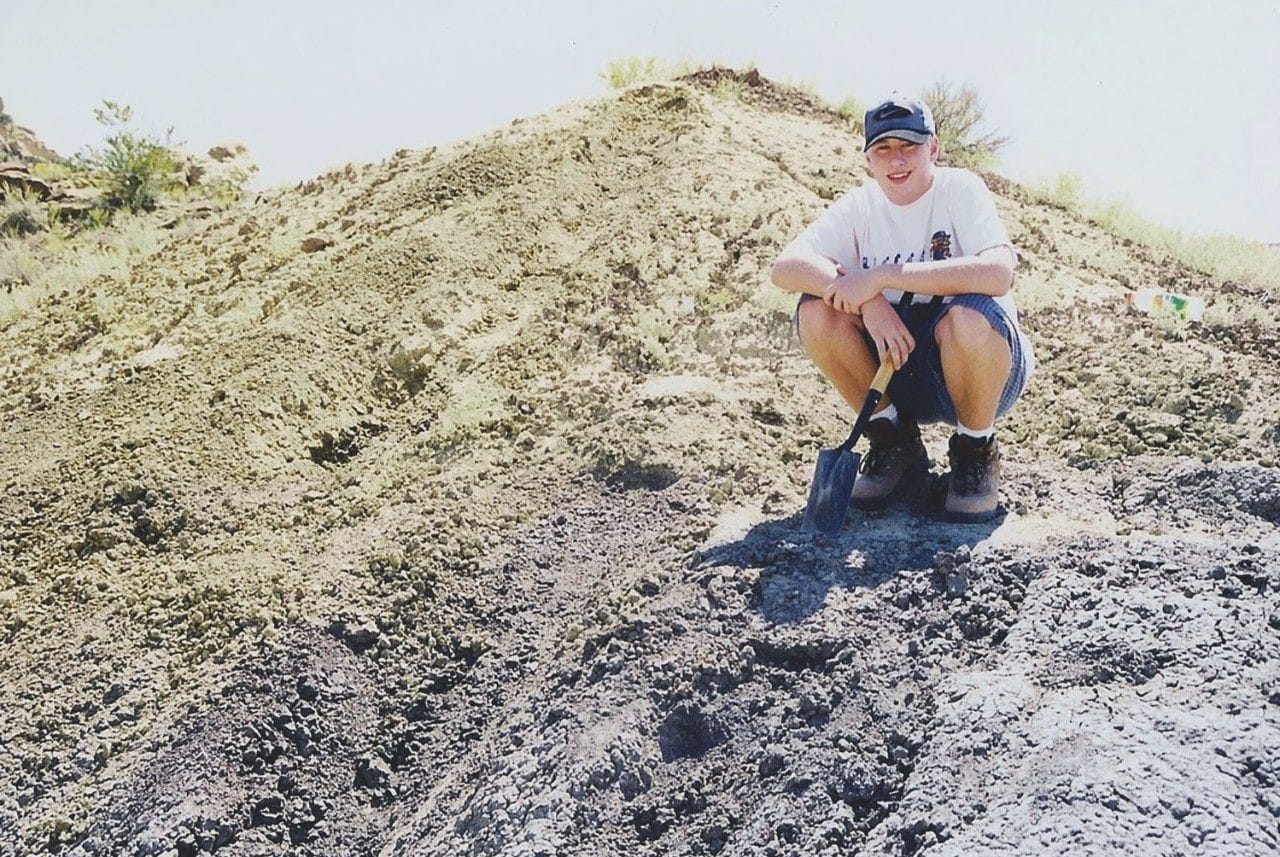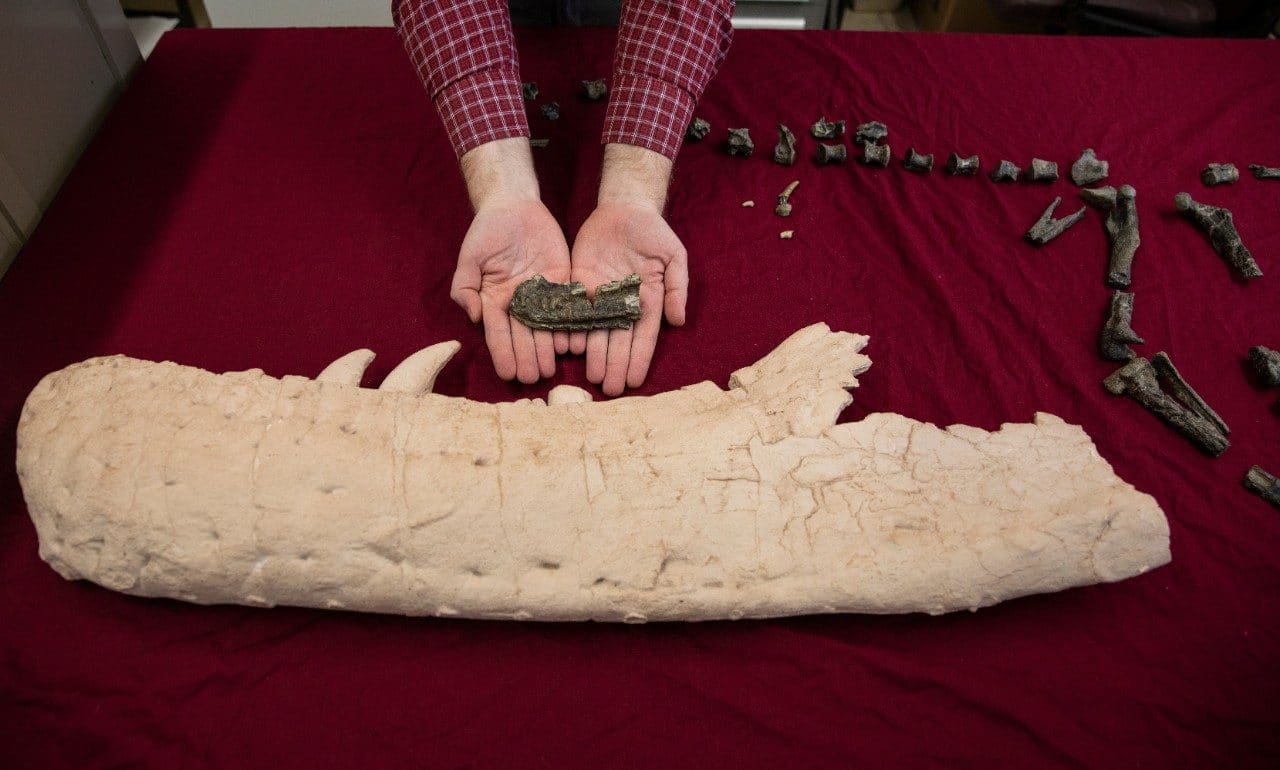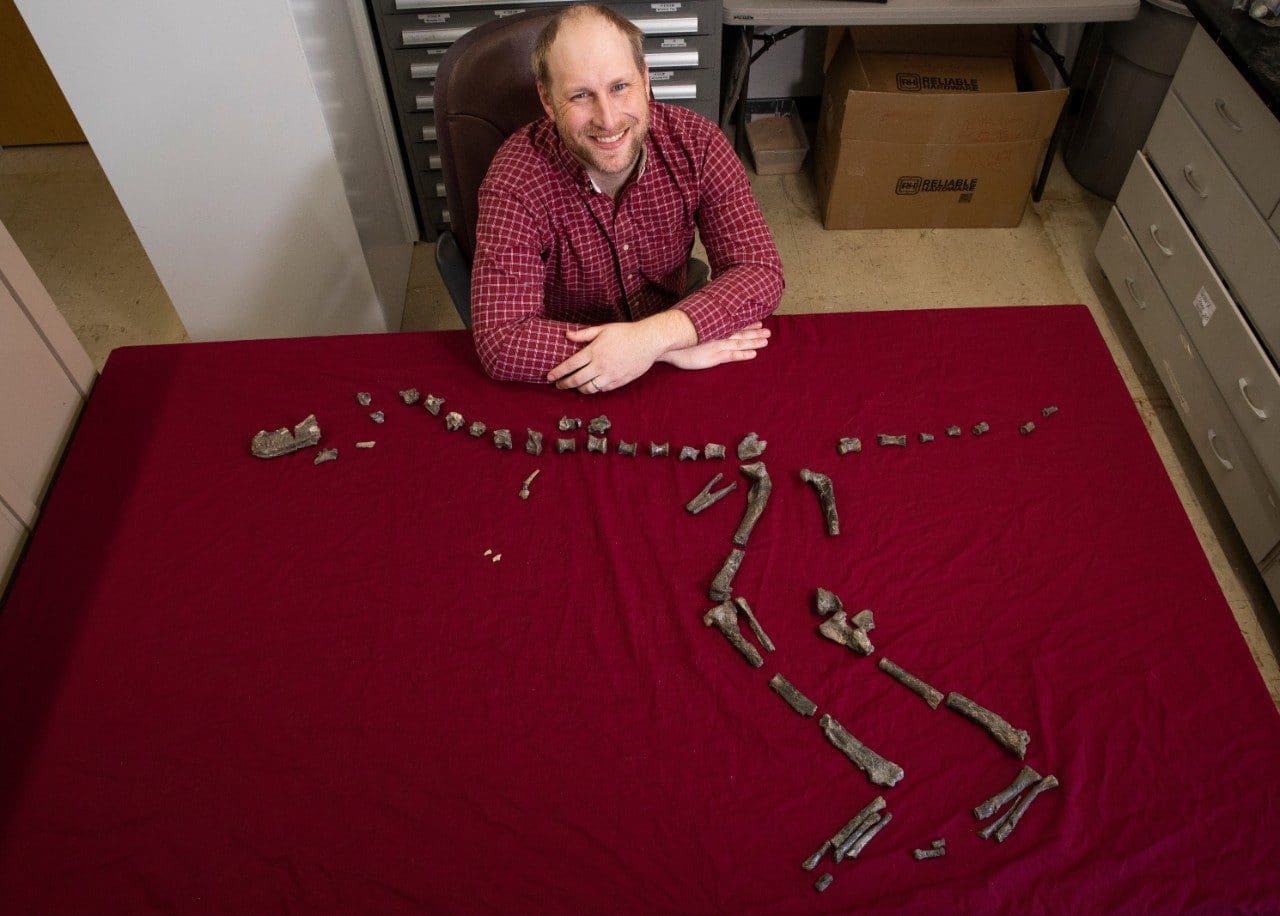A tiny 3-foot-tall relative of the Tyrannosaurus rex has been discovered and named Suskityrannus hazelae. The discovery was made by Virginia Tech paleontologist Sterling Nesbitt in New Mexico in 1998.
The entire animal is only marginally longer than just the skull of a fully-grown Tyrannosaurus rex. Suskityrannus hazelae is believed to have weighed between 45 and 90 pounds. The typical weight for a full-grown Tyrannosaurus rex is roughly 9 tons.
The fossil dates back 92 million years to the Cretaceous Period, a time when some of the largest dinosaurs ever found lived.
Its diet likely consisted of the same as its larger meat-eating counterpart, with Suskityrannus hazelae likely hunting small animals. However, its diet remains a mystery. According to the analysis done by considering the growth of its bones, the dinosaur must be at least 3 years old at the time of death.
Nesbitt said, “Suskityrannus gives us a glimpse into the evolution of tyrannosaurs just before they take over the planet. It also belongs to a dinosaurian fauna that just proceeds the iconic dinosaurian faunas in the latest Cretaceous that include some of the most famous dinosaurs, such as the Triceratops, predators like Tyrannosaurus rex, and duckbill dinosaurs like Edmotosaurus.”
“Suskityrannus has a much more slender skull and foot than its later and larger cousins, the Tyrannosaurus rex. The find also links the older and smaller tyrannosauroids from North America and China with the much larger tyrannosaurids that lasted until the final extinction of non-avian dinosaurs.”
Two partial skulls were discovered. The first partial skull was discovered in 1997 by Robert Denton, now a senior geologist with Terracon Consultants, and others in the Zuni Basin of western New Mexico during an expedition organized by Zuni Paleontological Project leader Doug Wolfe.

The second, more complete specimen was found in 1998 by Nesbitt.
James Kirkland, at the Utah Geological Survey, said, “Following Sterling out to see his dinosaur, I was amazed at how complete a skeleton was lying exposed at the site.”
The fossil remains were found near other dinosaurs, along with the remains of fish, turtles, mammals, lizards, and crocodylians.
For more than 2 decades, the fossil remains were uncovered, and the science team was unaware of what they had.

From 1998 until 2006, the fossils remained stored at the Arizona Museum of Natural History in Mesa, Arizona. After 2006, Nesbitt brought the fossils with him through various postings as student and researcher in New York, Texas, Illinois, and now Blacksburg.
Nesbitt said, “Essentially, we didn’t know we had a cousin of Tyrannosaurus rex for many years. The team first thought they had the remains of a dromaeosaur, such as Velociraptor. During the late 1990s, close relatives Tyrannosaurus rex simply were not known or not recognized. Since then, more distant cousins of Tyrannosaurus rex, such as Dilong paradoxus, have been found across Asia.”
Funding for Nesbitt and his team’s research into Suskityrannus came from the Discovery Channel, the Virginia Tech Department of Geosciences, and the American Museum of Natural History. Additional scientists on the team come from the University of Edinburgh, the Natural History Museum of Los Angeles, the University of Utah, and several more institutions.
The findings are published in the latest online issue of Nature Ecology & Evolution.

